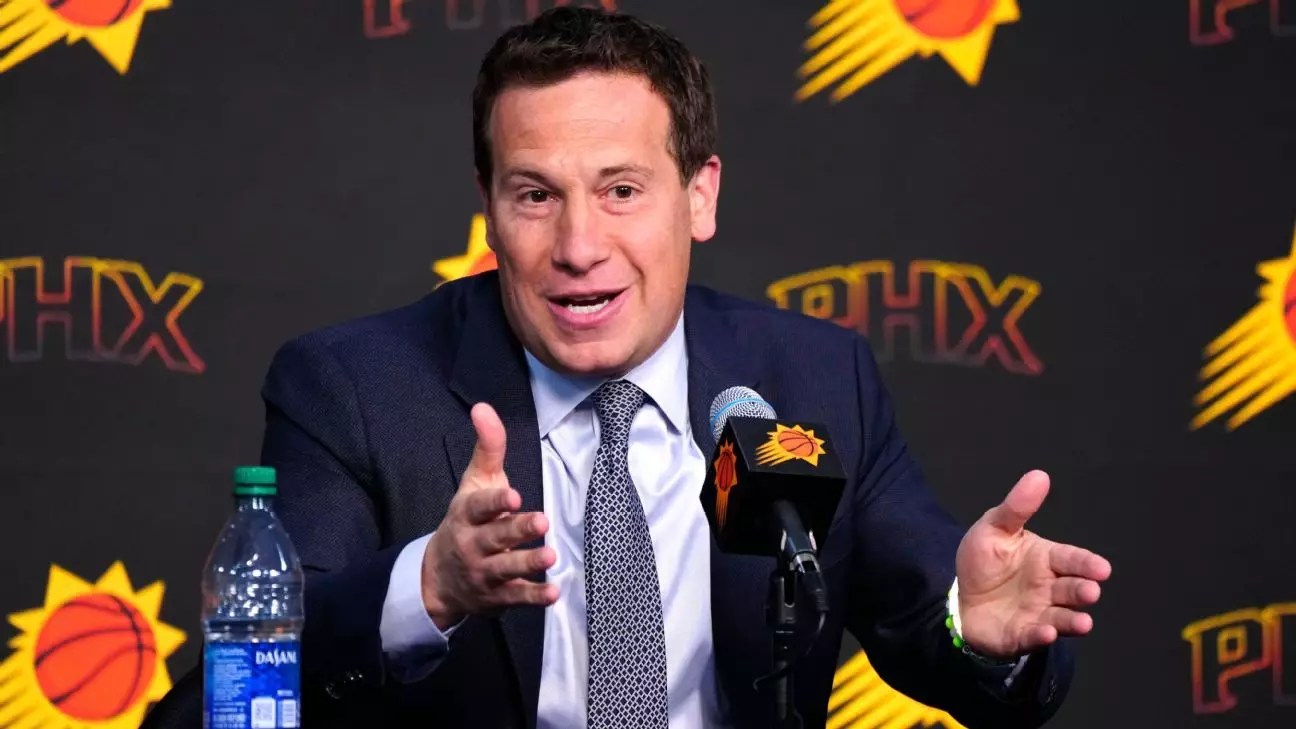The recent strategic move by the Phoenix Suns and Phoenix Mercury marks a seismic shift in the way professional sports teams approach local broadcasting rights. Traditionally, NBA franchises have heavily relied on regional sports networks (RSNs) for a significant share of their income, often paired with long-term contracts that promised stable revenue but became increasingly precarious amid the cord-cutting revolution. Phoenix’s decision to exit its longstanding partnership with Diamond Sports and instead embrace free over-the-air broadcasts represents not just a gamble but a visionary blueprint for reinvigorating local engagement and financial stability. By leveraging the rising popularity of their teams—evidenced by more than doubling local ratings—the Suns and Mercury have turned a challenging circumstance into an innovative success story that might redefine the league’s future.
Challenging the Status Quo: From RSNs to Over-the-Air Success
The Suns’ bold move in 2023 to produce and broadcast their games independently over local broadcast stations was initially met with skepticism and legal challenges. Diamond Sports, which filed a lawsuit against the team, exemplified the risks associated with renegotiating traditional media deals. Yet, Phoenix’s resilience and commitment to fans sparked a new approach: giving away antennas, launching Suns+, and utilizing free terrestrial broadcasting to reach more viewers directly. These efforts paid off, with local ratings surging and a remarkable 425% increase for the Mercury, highlighting the public’s appetite for accessible sports content. While the league survives on lucrative national deals, these local initiatives demonstrate that teams can carve out sustainable, fan-friendly models that foster community loyalty and long-term growth.
Financial Implications and a Broader Industry Shift
The $30 million annual valuation of the new Gray Media contract underscores just how vital local broadcasting is for NBA teams. This figure effectively replaces the diminished revenue from RSNs, which have struggled amid declining cable subscriptions. The broader industry outlook remains uncertain, as other teams grapple with revenue reductions—most notably the Knicks’ restructuring with MSG Networks. These shifts reveal a critical inflection point: the league’s traditional revenue model is under strain, and teams must adapt swiftly to safeguard their financial health. For Phoenix, the model appears to work—a “win-win,” as owner Mat Ishbia describes it—driving home the fact that embracing traditional broadcast platforms alongside digital streaming can help stabilize and even boost local revenues in a time of upheaval.
Strategic Leadership and the Path Forward
Ishbia’s proactive stance and open communication with fellow owners illuminate a crucial insight: leadership must be adaptable and forward-thinking to survive the evolving landscape. His hope that Phoenix’s experiment can serve as a blueprint for other franchises is not just aspirational but grounded in tangible early success. As the league approaches the expiry of 18 local RSN deals over the next couple of years, NBA decision-makers are increasingly compelled to explore hybrid models—combining over-the-air broadcasts, streaming, and digital platforms—to diversify revenue streams and reach broader audiences.
The league’s $77 billion, 11-year national media rights deal offers a promising foundation; however, it cannot alone compensate for shrinking local TV revenue. The challenge now lies in crafting a sustainable, multi-faceted approach that balances national deal dominance with innovative local partnerships. In doing so, the NBA can reclaim lost ground, foster stronger community ties, and ensure that the game’s popularity continues to grow at the grassroots level.
Concluding Thoughts: A New Era of Fan-Centric Innovation
Phoenix’s pioneering move exemplifies a fundamental shift in sports media strategy—prioritizing accessibility and local engagement over traditional, often risk-averse contract structures. While initial legal battles and uncertainties accompanied their departure from RSNs, the results speak volumes: increased ratings, expanded fan base, and substantial revenue. Other teams are now watching closely, recognizing that the future might not be about exclusive cable contracts but about embracing open, fan-friendly platforms that cultivate loyalty. The Suns and Mercury have set a powerful example, illustrating that with bold leadership and a willingness to challenge conventions, professional sports teams can forge a more resilient and inclusive financial model—one rooted in accessibility, innovation, and long-term sustainability.


Leave a Reply